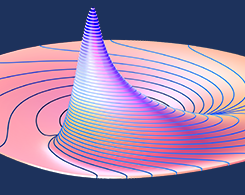Cluster & Cloud Computing Blog Posts

How Large of a Model Can You Solve with COMSOL®?
Ever wonder how large of a model you can solve in COMSOL Multiphysics®? It depends on memory requirements, model size, and the dimension of your finite element problem.

Exploiting Hardware Parallelism with COMSOL® Batch Sweeps
What is a batch sweep? How do I set up a batch sweep for my model? How much batch parallelism can COMSOL Multiphysics® exploit? We answer these questions and more…

Digital Twins and Model-Based Battery Design
By combining high-fidelity multiphysics models with lightweight models and measured data, engineers can create digital twins to understand, predict, optimize, and control real-world systems.

How to Use the Cluster Sweep Node in COMSOL Multiphysics®
Keep your cluster admin happy by using the Cluster Sweep node in COMSOL Multiphysics® to optimize the parallelization of parametric computations on clusters.

How to Run on Clusters from the COMSOL Desktop® Environment
You can run large simulations remotely on HPC hardware directly from the COMSOL Desktop® graphical environment. Learn how in this tutorial blog post.

Running COMSOL Multiphysics® with Cloud Computing
You want to run some HPC simulations in COMSOL Multiphysics®, but don’t have access to a cluster. What can you do? One option is cloud computing. Learn more about it here >>

Understanding Parallel Computing
Q: Do you use parallel computing to run your COMSOL Multiphysics® simulations? If so, you may enjoy this conceptual overview of computers and the algorithms used by the COMSOL® software.

Getting the Most out of Client-Server Mode
Learn how to use Client-Server mode when modeling in COMSOL Multiphysics® on a Floating Network License — and see why it is beneficial for you to do so.
